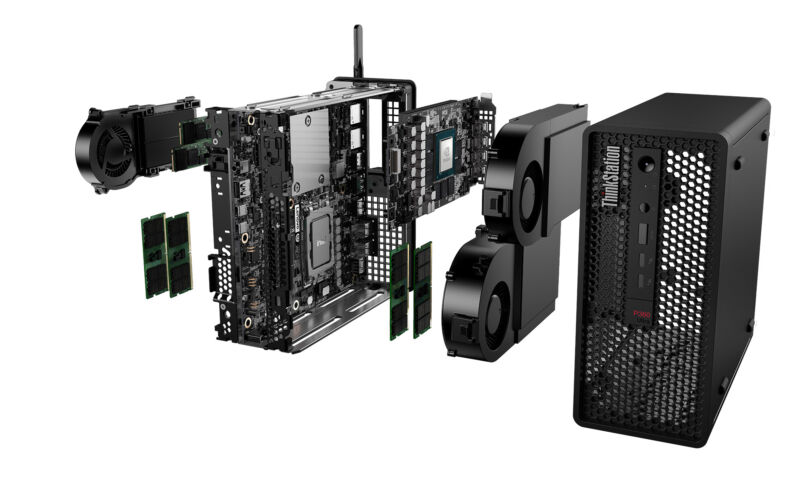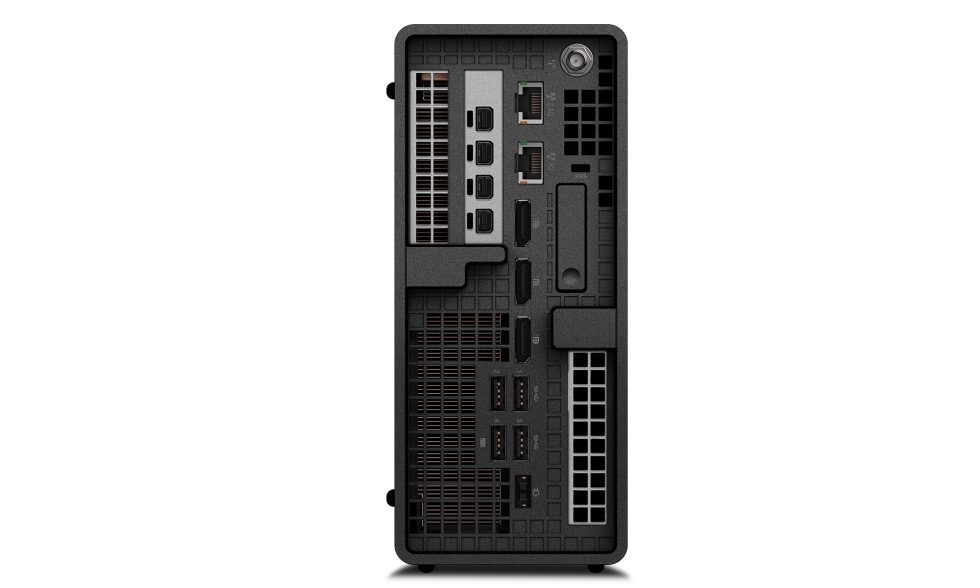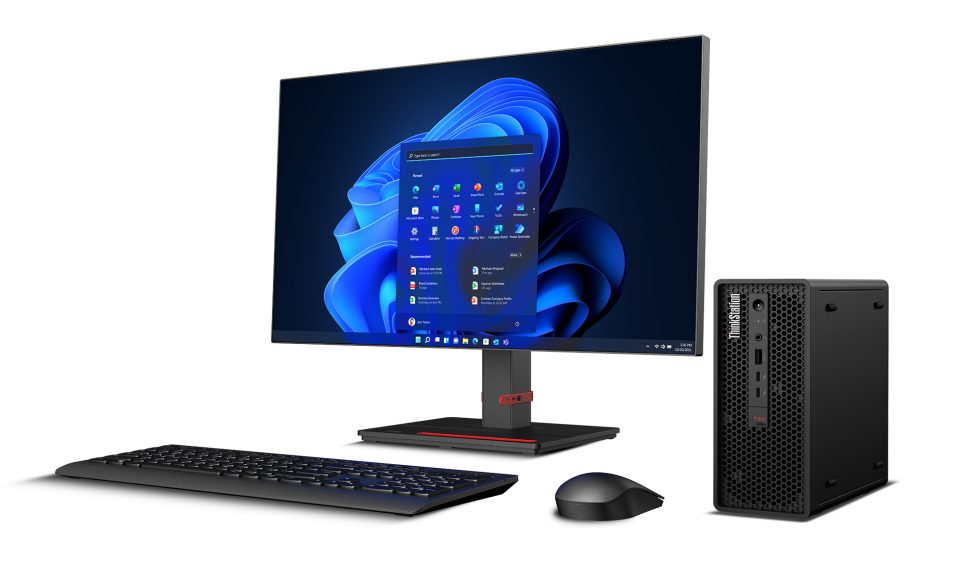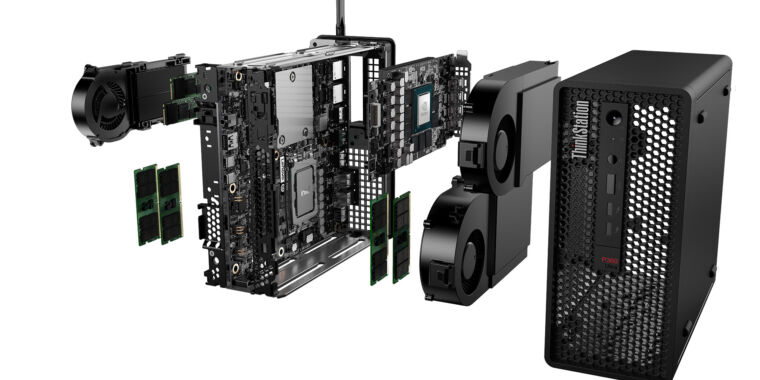
Lenovo
You’ll never find a high-end workstation or a gaming PC that’s quite as small as Intel’s original NUC lineup, but there are options if you want a tiny but high-performance desktop. One of those is Lenovo’s new ThinkStation P360 Ultra, a mini desktop that crams Intel’s 12th-generation Alder Lake desktop CPUs, Nvidia RTX A2000 and A5000 GPUs with up to 16GB of VRAM, and a surprising amount of expandability into a small enclosure that’s just 3.9 liters in volume.
The ThinkStation has lots of ports for a system its size, with a total of seven DisplayPort outputs in back (three full-size ports wired to the integrated Intel GPU, and four mini DisplayPorts connected to the dedicated GPU), one 2.5Gbps Ethernet port, another 1Gbps Ethernet port, and four rear USB-A ports on the back. On the front you’ll find a headphone jack, another USB-A port, and a pair of Thunderbolt 4 ports.

Lenovo
Internal expandability is good, too. The ThinkStation can fit a total of two M.2 SSDs and a single 2.5-inch hard drive or SSD and up to four DDR5 RAM modules. The 12GB RTX A2000 GPU option should perform somewhere in between an RTX 3050 and an RTX 3060, while the RTX A5000 mobile GPU should perform more like the laptop version of the RTX 3080 GPU. Lenovo offers Alder Lake CPUs from the quad-core Core i3 all the way up to a Core i9 with a total of 16 cores (eight P-cores and eight E-cores—our CPU reviews show the benefits of these smaller cores for workloads that distribute well across many CPU cores).
The P360 is smaller than high-performance mini PCs like Intel’s NUC 12 Extreme, which also uses 12th-gen Alder Lake CPUs with up to 16 cores—the NUC measures 14.1×7.4×4.7 inches, while the ThinkStation is just 8.7×7.9×3.4 inches. But the NUC does have the advantage of using a standard PCI Express slot with a GPU that can be upgraded a couple years down the line, though its small size will generally limit you to physically smaller GPUs than you can use in a full-size desktop or a roomier mini ITX PC build. The ThinkStation does appear to use removable GPU modules, but using a proprietary connector—whether upgrades are possible down the line depends on whether Lenovo packages more GPUs this way in the future and whether it offers them as upgrades rather than simply including them in newer PCs.

Lenovo
Expect to pay a lot of money for the most powerful configurations of the P360 Ultra. The PC will start at $1,299 later this month, but that configuration will likely include a quad-core Core i3 CPU and integrated graphics. If that’s all the power you need, the P360 Ultra is actually a bit big—the system’s size only becomes impressive once you’ve added dedicated graphics and a beefier processor.
We also don’t know whether (or how much) the P360 Ultra’s CPU or GPU will be constrained by power or heat limitations—the system tops out at a 300 W power supply, which is less power than a high-end desktop GPU like the RT 3080 or 3090 can consume all by itself. In other words, a larger system will still be capable of letting its components run faster for longer.








